Thursday, July 11, 2013 - 01:58 AM UTC
The eagerly awaited largescale Fiat G.50 leads a great line-up from MPM Production this month:
"Well, summer is said to be a silly season, but definitely not for us. Besides the well deserved vacation there are many prepared models that need to be finished (all of them slightly delayed, as usual) and also we have to get ready for the IPMS USA 2013. So, really a lot to do. Many of our customers are asking for release date of 72nd scale AH-1G, AH-1Q/S Cobra models and 32nd scale Tempest. We will have the first testshots of Cobras in the second half of Jul and we expect these models to be on the shops shelves during September at the latest, well, if everything goes as it should. Tempest is expected somewhat later, there will be more versions that will appear on the market gradually. There is not only the Mk.V, but also Mk.II and Mk.VI in preparation now.
SH32044 Fiat G.50-II Freccia “Finnish Aces” 1/32
Finland, like David against Goliath, threatened by Stalin Soviet Union, was purchasing available weapons all over Europe in the years 1938-39. Whole batch of Fiat G.50 fighters was bought in Italy. Despite some troubles with their delivery, the new Fiat fighters made it to Finland just in time to get involved in the Winter War and fought successfully as well as during the Continuation War. As the weather conditions in Finland were quite different from sunny Italy, the machines were modified. The changes related to their tails, fuselage spines, propeller spinner etc. And the overall appearance of the fighters changed several times during their service. It also applies to the camouflages, the original Italian colours gave way to Finnish camouflages later.
So, it is our intention to capture all these changes in our model. You´ll find there three Finnish machines, and two of them in two different markings. These are machines of Finnish aces, Kapt. R.O.P. Puhakka and Luunt. O.Tuominen, including Tuominen´s famous „Blue 6“. The kit contains four plastic sprues, injected clear canopy, detailed resin parts including excellent Fiat A.74 engine, photo etches and decals.
SH32056 Fiat G.50bis Freccia “Regia Aeronautica” 1/32
Main user of Fiat G.50 was Regia Aeronautica, the Italian Royal Air Force, that put the Fiat fighters into service yet before the outbreak of the war. The first version was tested during the final phase of the Spanish Civil War. The G.50bis version was the answer to Italian fighters lagging behind the enemy´s counterparts and also allowed the Fiat fighters to be used in a attack role. Fiat G.50bis fought as over the Peloponnese, so also over Malta, Africa and homeland Italy.
This model also consists of four plastic sprues, injected clear canopy, detailed resin parts with excellent Fiat A.74 engine, photo etches and decals that offers markings for four Italian machines. All of them camouflaged in typical Italian spotted way, but each of the machines having the spots and colours different.
A111 Morane Saulnier MS-406C.1 “Czechoslovak & Polish” 1/72
Morane Saulnier MS-406C.1, the most common French fighter planes of the Battle of France, was designed in 1936 already, but first of them reached the Armée de l´Air only in 1938, due to delays during their production. Albeit it outperformed the earlier Bf 109B/C versions, the newer 109Es and Bf110Cs were tough opponents for slower, yet more manoeuvrable Moranes. In cockpits of the MS-406 fought not only French , but also Czech and Polish pilots, until the France surrender in summer 1940. While the Czechoslovak pilots began to arrive to France after the German occupation of their homeland in March 1939, the Poles followed suit just after fall of Poland in October 1939. Pilots of both these nations fought often with more enthusiasm and determination than the French themselves.
The kits parts are laid out into two sprues, and contain also one clear parts sprue and resin parts, including exquisite main undercarriage wheels, which were designed using 3D technology. The decals offer four machines with French marking, but flown by the Czechoslovak and Polish pilots. One of the polish machines is adorned on its side with large polish insignia. The others bear markings of their Respective French units.
SH72264 SB2U-3 Vindicator “MARINES Go To War” 1/72
In the 1930s it became obvious for the US. Navy that the biplane era is over. Cantilever low-wing monoplane with retractable undercarriage, phenomenon of the time, offered much better performance in comparison with the classical biplanes. This fact convinced the decision-makers to call for a competition for a new SB category machine (SB for Scout-Bomber) and dive bombing abilities were required. XSB2U prototype, named Vindicator and made by Vought factory was the winner and was accepted into production for the US Navy and Marines, and manufactured in SB2U-1, -2 and -3 variants. Longer range than the earlier models had was required by the Navy and Marines and so the -3 version got enlarged fuel tanks. In order to maintain the center of gravity, larger tailplanes were used and also the outer foldable wing sections were of bigger dihedral. The US Navy Vindicators were never put into real fightings unlike the Marine Corps machines. Marines unit VMSB-231, in March 1942 redesigned to VMSB-241 and named „Sons of Satan“ and stationed at Midway Atoll, got its SB2U-3 Vindicators and used them in the probably most important battle in the Pacific. After the battle, the VMSB-241 Vindicators were used until the autumn 1942 when were withdrawn from the first line.
Model of this version consists of two plastic part sprues, injected clear canopy, detailed resin machine-gun and decals. While the fuselage halves and wing parts are made from standard short-run moulds (and differ from earlier versions in SH72257 and SH72272 kits), the tiny parts were designed using 3D technology and injected into machine-milled metal moulds. This fact ensures a much higher quality and pushes the model to a higher level. In the metal moulds you´ll find not only the cockpit and undercarriage parts, but also various bomb armament and underbelly fuel tank. There are four various machines in the decals , the first one is the famous Battle of Midway machine in Blue-Gray on its upper surfaces and Gray below and there are also the aluminium-doped first prototype with yellow wings and two grey overall machines. One of them was destroyed during Japanese raid on Peral Harbor, the other one was used for training in the USA.
SH72268 V-156B Chesapeake Mk.I 1/72
In 1940, modified machines with V-156 designation and with dive brakes on their wings, identical to the first prototype, were ordered by France and used for defence of its territory. Three French orders were accepted by Vought factory. Planes from the last one of them, however, were modified further and delivered to another customer, that was the UK. V-156s modified according to British requirements were designated as V-156B Chesapeake Mk.I and were evaluated with No.811 Fleet Air Arm squadron as well as with some second line units. Due to unclear requirements and ideas – planes intended for dive-bombing were to be deployed from escort carrier ships for fighter duties – were never used in real figtings and ended their career with second line units. All that despite the fact, that they outperformed any other bomber plane available to FAA at the time.
The British Chesapeake plane stood somewhere between the SB2U-2 and SB2U-3 versions and that is why the model contains the former version wing and fuselage parts of the latter. The rest of the parts is the same. The decals cover three No.811 sqn machines and one of 15 MU.
SH48110 Heinkel He 115C 1/48
Huge Heinkel He-115 floatplanes reigned the sea between the UK and Soviet Murmansk in the first phases of the Second World War. German Luftwaffe deployed them during the attack on Norway as well as against the convoys routes. Yet before the war, the He-115 floatplanes were successfully tested in Spain and were exported, by coincidence also to Norway. Norwegian planes were involved in figthting against the Germans and one of
them managed to escape and flew to Britain.
The He-115C version in the Luftwaffe colours contains decals for three machines, including 8L+FH that has been recently raised from its sea bed. The model contains seven parts, injected clear canopy parts and resin parts."
SH32044 Fiat G.50-II Freccia “Finnish Aces” 1/32
Finland, like David against Goliath, threatened by Stalin Soviet Union, was purchasing available weapons all over Europe in the years 1938-39. Whole batch of Fiat G.50 fighters was bought in Italy. Despite some troubles with their delivery, the new Fiat fighters made it to Finland just in time to get involved in the Winter War and fought successfully as well as during the Continuation War. As the weather conditions in Finland were quite different from sunny Italy, the machines were modified. The changes related to their tails, fuselage spines, propeller spinner etc. And the overall appearance of the fighters changed several times during their service. It also applies to the camouflages, the original Italian colours gave way to Finnish camouflages later.
So, it is our intention to capture all these changes in our model. You´ll find there three Finnish machines, and two of them in two different markings. These are machines of Finnish aces, Kapt. R.O.P. Puhakka and Luunt. O.Tuominen, including Tuominen´s famous „Blue 6“. The kit contains four plastic sprues, injected clear canopy, detailed resin parts including excellent Fiat A.74 engine, photo etches and decals.
SH32056 Fiat G.50bis Freccia “Regia Aeronautica” 1/32
Main user of Fiat G.50 was Regia Aeronautica, the Italian Royal Air Force, that put the Fiat fighters into service yet before the outbreak of the war. The first version was tested during the final phase of the Spanish Civil War. The G.50bis version was the answer to Italian fighters lagging behind the enemy´s counterparts and also allowed the Fiat fighters to be used in a attack role. Fiat G.50bis fought as over the Peloponnese, so also over Malta, Africa and homeland Italy.
This model also consists of four plastic sprues, injected clear canopy, detailed resin parts with excellent Fiat A.74 engine, photo etches and decals that offers markings for four Italian machines. All of them camouflaged in typical Italian spotted way, but each of the machines having the spots and colours different.
A111 Morane Saulnier MS-406C.1 “Czechoslovak & Polish” 1/72
Morane Saulnier MS-406C.1, the most common French fighter planes of the Battle of France, was designed in 1936 already, but first of them reached the Armée de l´Air only in 1938, due to delays during their production. Albeit it outperformed the earlier Bf 109B/C versions, the newer 109Es and Bf110Cs were tough opponents for slower, yet more manoeuvrable Moranes. In cockpits of the MS-406 fought not only French , but also Czech and Polish pilots, until the France surrender in summer 1940. While the Czechoslovak pilots began to arrive to France after the German occupation of their homeland in March 1939, the Poles followed suit just after fall of Poland in October 1939. Pilots of both these nations fought often with more enthusiasm and determination than the French themselves.
The kits parts are laid out into two sprues, and contain also one clear parts sprue and resin parts, including exquisite main undercarriage wheels, which were designed using 3D technology. The decals offer four machines with French marking, but flown by the Czechoslovak and Polish pilots. One of the polish machines is adorned on its side with large polish insignia. The others bear markings of their Respective French units.
SH72264 SB2U-3 Vindicator “MARINES Go To War” 1/72
In the 1930s it became obvious for the US. Navy that the biplane era is over. Cantilever low-wing monoplane with retractable undercarriage, phenomenon of the time, offered much better performance in comparison with the classical biplanes. This fact convinced the decision-makers to call for a competition for a new SB category machine (SB for Scout-Bomber) and dive bombing abilities were required. XSB2U prototype, named Vindicator and made by Vought factory was the winner and was accepted into production for the US Navy and Marines, and manufactured in SB2U-1, -2 and -3 variants. Longer range than the earlier models had was required by the Navy and Marines and so the -3 version got enlarged fuel tanks. In order to maintain the center of gravity, larger tailplanes were used and also the outer foldable wing sections were of bigger dihedral. The US Navy Vindicators were never put into real fightings unlike the Marine Corps machines. Marines unit VMSB-231, in March 1942 redesigned to VMSB-241 and named „Sons of Satan“ and stationed at Midway Atoll, got its SB2U-3 Vindicators and used them in the probably most important battle in the Pacific. After the battle, the VMSB-241 Vindicators were used until the autumn 1942 when were withdrawn from the first line.
Model of this version consists of two plastic part sprues, injected clear canopy, detailed resin machine-gun and decals. While the fuselage halves and wing parts are made from standard short-run moulds (and differ from earlier versions in SH72257 and SH72272 kits), the tiny parts were designed using 3D technology and injected into machine-milled metal moulds. This fact ensures a much higher quality and pushes the model to a higher level. In the metal moulds you´ll find not only the cockpit and undercarriage parts, but also various bomb armament and underbelly fuel tank. There are four various machines in the decals , the first one is the famous Battle of Midway machine in Blue-Gray on its upper surfaces and Gray below and there are also the aluminium-doped first prototype with yellow wings and two grey overall machines. One of them was destroyed during Japanese raid on Peral Harbor, the other one was used for training in the USA.
SH72268 V-156B Chesapeake Mk.I 1/72
In 1940, modified machines with V-156 designation and with dive brakes on their wings, identical to the first prototype, were ordered by France and used for defence of its territory. Three French orders were accepted by Vought factory. Planes from the last one of them, however, were modified further and delivered to another customer, that was the UK. V-156s modified according to British requirements were designated as V-156B Chesapeake Mk.I and were evaluated with No.811 Fleet Air Arm squadron as well as with some second line units. Due to unclear requirements and ideas – planes intended for dive-bombing were to be deployed from escort carrier ships for fighter duties – were never used in real figtings and ended their career with second line units. All that despite the fact, that they outperformed any other bomber plane available to FAA at the time.
The British Chesapeake plane stood somewhere between the SB2U-2 and SB2U-3 versions and that is why the model contains the former version wing and fuselage parts of the latter. The rest of the parts is the same. The decals cover three No.811 sqn machines and one of 15 MU.
SH48110 Heinkel He 115C 1/48
Huge Heinkel He-115 floatplanes reigned the sea between the UK and Soviet Murmansk in the first phases of the Second World War. German Luftwaffe deployed them during the attack on Norway as well as against the convoys routes. Yet before the war, the He-115 floatplanes were successfully tested in Spain and were exported, by coincidence also to Norway. Norwegian planes were involved in figthting against the Germans and one of
them managed to escape and flew to Britain.
The He-115C version in the Luftwaffe colours contains decals for three machines, including 8L+FH that has been recently raised from its sea bed. The model contains seven parts, injected clear canopy parts and resin parts."
Click Star to Rate
2 readers have rated this story.
THIS STORY HAS BEEN READ 6,619 TIMES.
| MPM Production Reviews | MORE |
| Fokker D.XXI 'Dutch Patrol' by Allen Berry | of 1 ratings, 100% found this helpful | |
| A-20B Havoc by Andy Brazier | of 3 ratings, 100% found this helpful | |
| Breda Ba.88B Lince by Andy Brazier | |
| Vickers Wellington Mk.II by Eetu Tahvonen | of 3 ratings, 100% found this helpful | |
| Focke-Wulf Fw 187 by Daniel Candal | of 3 ratings, 100% found this helpful | |
| Bristol Blenheim Mk. I by Ben Micklem | of 3 ratings, 100% found this helpful | |
| J8M1 Shusui by Frederick Boucher | of 2 ratings, 100% found this helpful | |
| A7M2 Reppu by Frederick Boucher | of 1 ratings, 100% found this helpful | |
| 1/18 B-17F Nose by Dade W. Bell | of 7 ratings, 86% found this helpful | |
| Fairey Fulmar Mk 1 by Rowan Baylis | of 8 ratings, 100% found this helpful | |
| Focke-Wulf Fw 189 A-1 by Jean-Luc Formery | of 1 ratings, 100% found this helpful | |
| Heinkel He 177A-5 by Steffen Arndt | of 5 ratings, 80% found this helpful | |





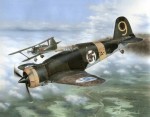
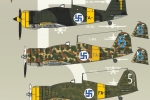
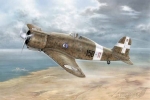
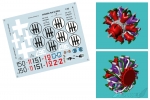
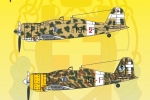
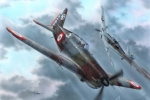
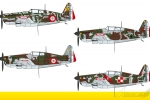
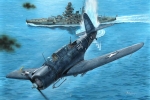
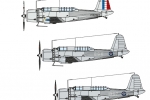
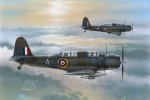
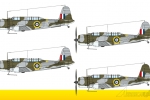

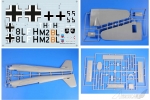



Comments